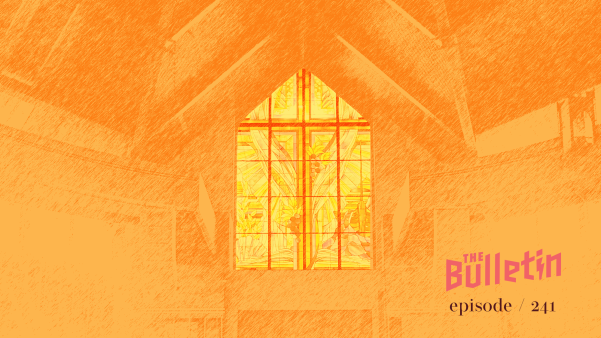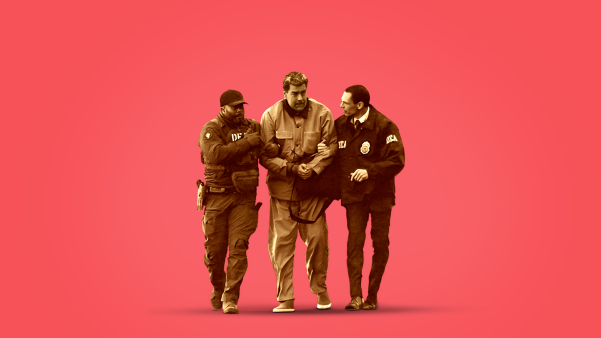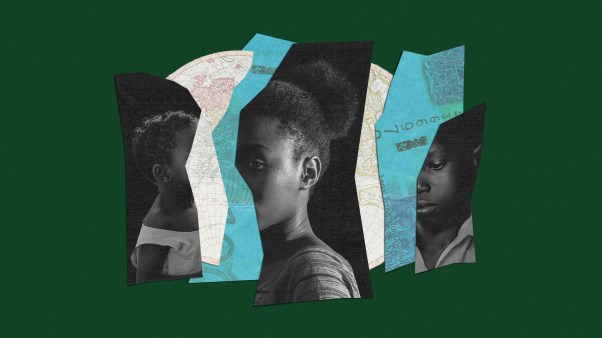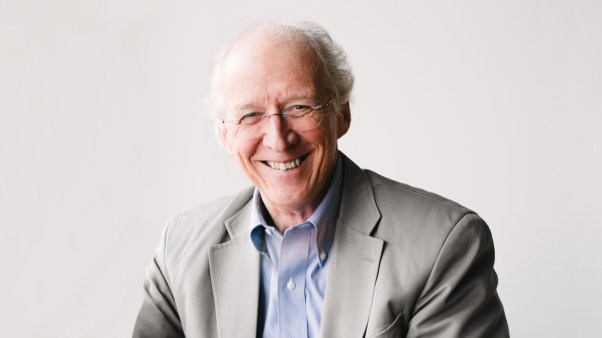It is hard to imagine a more tiresome book about a more fascinating subject than Ed Simon’s The Dove and the Dragon: A Cultural History of the Apocalypse.
The book’s premise is intriguing: a sweeping intellectual history of apocalyptic thought from the Zoroastrians to QAnon. And Simon promises to interpret this history through his “schema,” which revolves around two categories: “the gentle dove,” symbolic of “hopes for a coming millennium when all shall be perfected,” and “the vengeful dragon,” defined as “an emissary of destruction, a creature of fire who comes to annihilate.”
You could write an illuminating and important book showing how artists, politicians, and religious leaders have deployed these two apparently opposing visions across the centuries. Indeed, such a book might reveal the complicated ways they actually depend on one another. Unfortunately, that book remains to be written, though Simon has at least gathered plenty of raw material to inspire a future author.
Things begin to fall apart from the outset as factual and syntactic errors pile up. Simon quotes from “David” Alter’s The Art of Biblical Poetry while making an argument the actual scholar, Robert Alter, refutes in that book. Elsewhere, he draws a dubious comparison between the 1572 St. Bartholomew’s Day Massacre, in which French Catholic mobs massacred Protestant countrymen, and the Reign of Terror during the French Revolution. “A single night” of the first event, he asserts, “killed three times as many people” as the entirety of the second. Almost no historian would agree with this claim, which is likely why he cites none.
The plague of Justinian supposedly occurred “a century” before the 14th-century Black Death (Justinian was emperor in the sixth century). A discussion of the 19th-century preacher William Miller, who predicted Christ would return in 1843 or 1844, appears under the heading “The Burned-Over Country: America’s First Great Awakening.” Miller, of course, was active during the Second Great Awakening. I will spare you instances of garbled grammar; dangling modifiers, for instance, recur often.
These errors don’t inspire confidence in Simon’s idiosyncratic and usually unsubstantiated assertions. A few examples: The canonization of Revelation “was a seminal accident” based on confusion about its author’s identity, but the Quran was “divinely imparted” to Muhammad. “The cause of the American Revolution was fundamentally religious and millennial”—apparently taxation and representation were inconsequential. The alliance between evangelicals and Catholics opposing abortion owes to evangelical millennialism rather than any shared convictions about the sanctity of life. Because of the atomic bomb’s destructive power, “history thus divides before and after 1945 in a manner that no other event matches in significance, certainly not the birth of Christ.” Ronald Reagan was “agnostic.”
What does all this have to do with apocalypse as dove or dragon? I have no idea, and if Simon knows, he isn’t telling.
In lieu of real analysis, we get authoritative-sounding, cryptic declarations: “The French Revolution was both fulfillment and negation of the Enlightenment.” “If apocalypse wasn’t real it would be necessary to invent it, and so we did.” “Just as every millennium necessitates an apocalypse, so every apocalypse may reveal a millennium.”
When Simon does recall his opening promise to interpret events and figures through the dove-and-dragon paradigm, the results are banal. Muhammad, he writes, comes “in the guise of both the dragon and the dove, just like Christ.” Moore’s law, an Intel cofounder’s hypothesis regarding periodic improvements in computing power, “signaled either the emergence of an apocalyptic dragon, of a millennial dove, or both.” The book never elucidates such koan-like claims.
Part of the problem is that Simon’s working definition of apocalypse is so expansive as to be nearly meaningless. Sometimes he hews close to a standard definition: the end of history as we know it and, at least on the Christian account, the return of Christ. But apparently many other events or rhetorical habits count as well. Identifying one’s geopolitical enemies as the Antichrist, for instance. Any revolution, any disruptive historical event, anything that “unveils” anything. “Revolution is millennium,” he instructs us. In fact, almost anything “new” merits inclusion in Simon’s litany: He interprets a question from French American writer J. Hector St. John de Crèvecœur—“What then is the American, this new man?”—as “Edenic” and “millennial” in equal measure.
One might aptly describe the book’s structure, like the structure of many of its sentences, as a tedious concatenation of loosely related characters, incidents, and observations. There is no discernible narrative thread, no analytic framework to speak of, merely a catalog of undigested historical anecdotes.
Simon’s own summation of his study’s payoff reveals just how trivial it is. As he writes on the last page (with another typo), “If a reading of this book demonstrates anything, it’s that that every century has a contingent of people, both smaller and larger depending on circumstance, who are convinced that they’re living in the last days.” I’m not sure he needed 238 pages to demonstrate this. Whether T. S. Eliot is right to say the world will end “not with a bang but a whimper,” that is certainly how this book ends.
Nevertheless, sifting through the myriad examples gathered here, one glimpses the possibility of a more illuminating narrative. Across the centuries, threats and promises of apocalypse have served both to control and to comfort. Often, the promise of comfort relies on a related promise to bring some semblance of control to a chaotic or oppressive situation.
If you are afflicted—a member of a persecuted sect in a powerful empire, say—then it makes sense to imagine the peaceable kingdom coming in the wake of a definitive, divine judgment. Only after God casts Satan and his works into the lake of fire can such people hope to see the lion lie down with the lamb and the New Jerusalem descend from the heavens. It’s no wonder that the enslaved, the colonized, the proletariat were drawn to Girolamo Savonarola’s searing rhetoric against Renaissance-era corruptions, Nat Turner’s slave uprising, Miller’s prophecies, Joseph Smith’s new revelation, or Karl Marx and Friedrich Engels’s secularized vision of eternal peace and justice.
Yet time and again, as many of these examples indicate, this yearning to judge God’s enemies and usher in a harmonious kingdom takes an ugly turn. Gurus, cult leaders, or demagogues co-opt this vision to consolidate their own power rather than to remove political or economic barriers preventing judgment from running down as waters and righteousness as a mighty stream.
Thus it was that crusades waged in the name of holy war and liberation led to the massacre of European Jews and Eastern Christians. And that Communist ideology provided rhetorical justification for some of the most oppressive regimes in the 20th century. And that Nazism leveraged a sense of grievance and a promise to usher in a new millennium, the Third Reich, to gain widespread support for genocide.
The great promise of Christ’s return, however, differs fundamentally. Only God himself, not any human ruler, can inaugurate the Apocalypse. Scripture makes this point memorably in Daniel 5, with its account of the disembodied hand appearing during King Belshazzar’s grand feast. Daniel translates its mysterious “writing on the wall,” informing the arrogant king that God has numbered the days of his kingdom, has weighed him and found him wanting, and has given his kingdom to the Medes and Persians (vv. 26–28).
The unexpected demise of Babylon is a dramatic unveiling—in keeping, thematically, with Daniel’s later revelations. What is revealed? That God is the ultimate king and judge. That unjust rulers, no matter how entrenched they seem, will one day be overthrown.
In this way, a Christian apocalyptic hope relativizes all claims to earthly power. Empires will fall. The martyrs will reign with Christ. While some have twisted this confidence in God’s supreme sovereignty to justify passive acceptance of injustice on earth, this certainty has also freed many for humble, redemptive work. By lifting the impossible burden of saving the world from our shoulders, this eschatological hope liberates us to give ourselves—like Daniel—in faithful service, confident that God’s rule will be revealed in God’s time.
Jeffrey Bilbro is professor of English at Grove City College and editor in chief at Front Porch Republic. His most recent book is Words for Conviviality: Media Technologies and Practices of Hope.

















